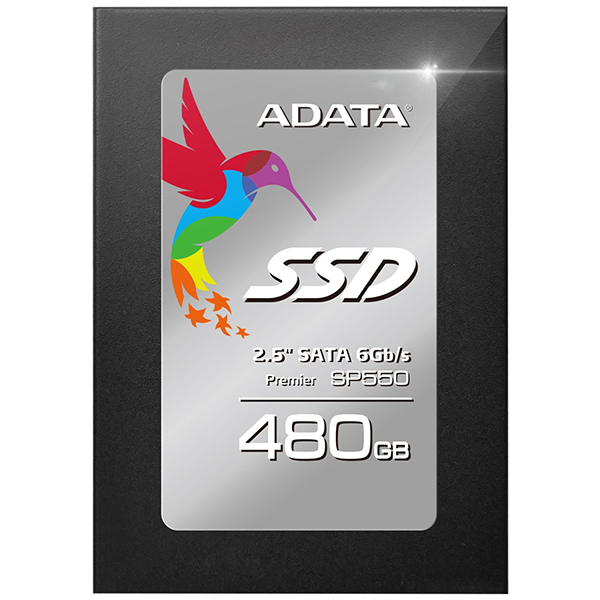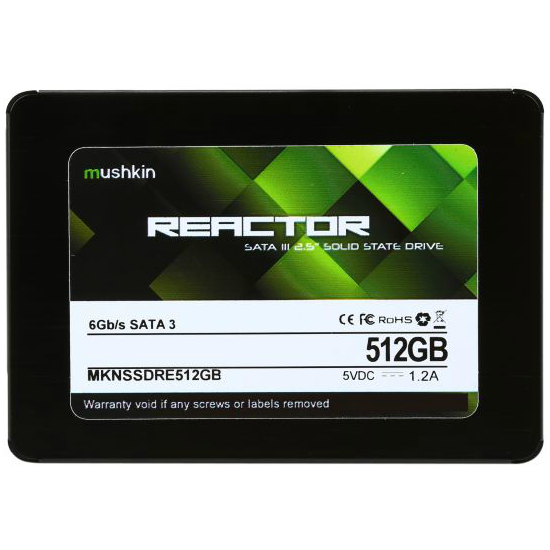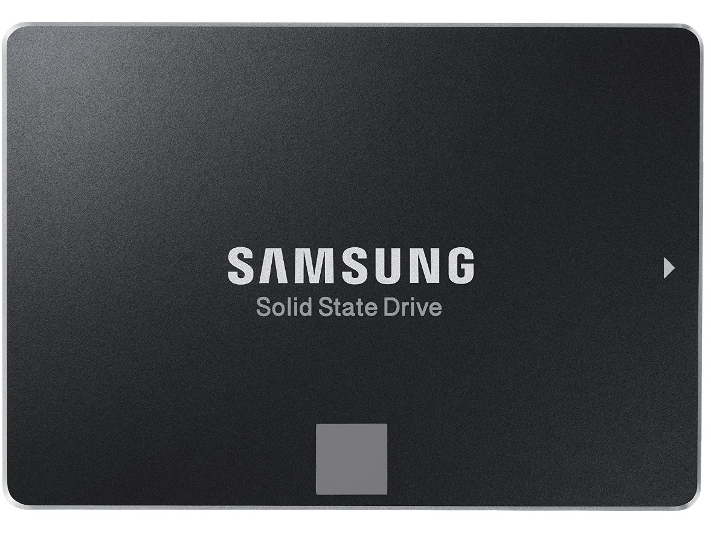Transcend SSD370S 512GB SSD Review
Transend's SSD370 we tested previously fell short of meeting our quality standards. But the SSD370S fixes those issues using Micron 16nm synchronous flash. Unfortunately, this model is also more expensive than its competition.
Why you can trust Tom's Hardware
Four-Corner Testing
Comparison Products
To read about our storage tests in-depth, please check out How We Test HDDs And SSDs. Four-corner testing is covered on page six of our How We Test guide.
Sequential Read
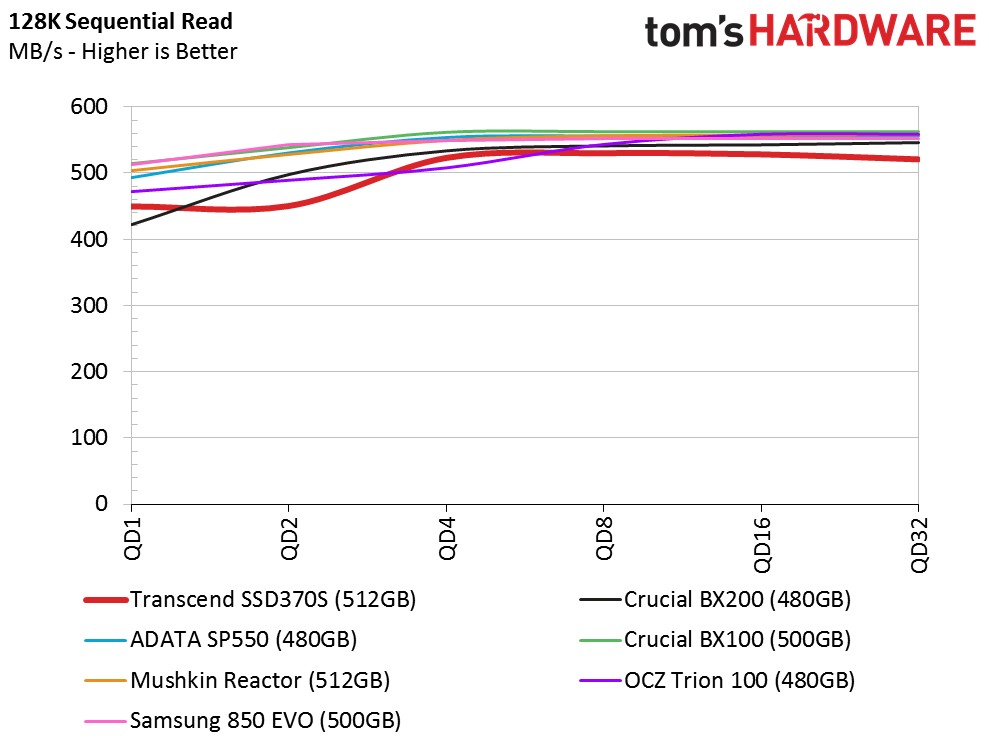
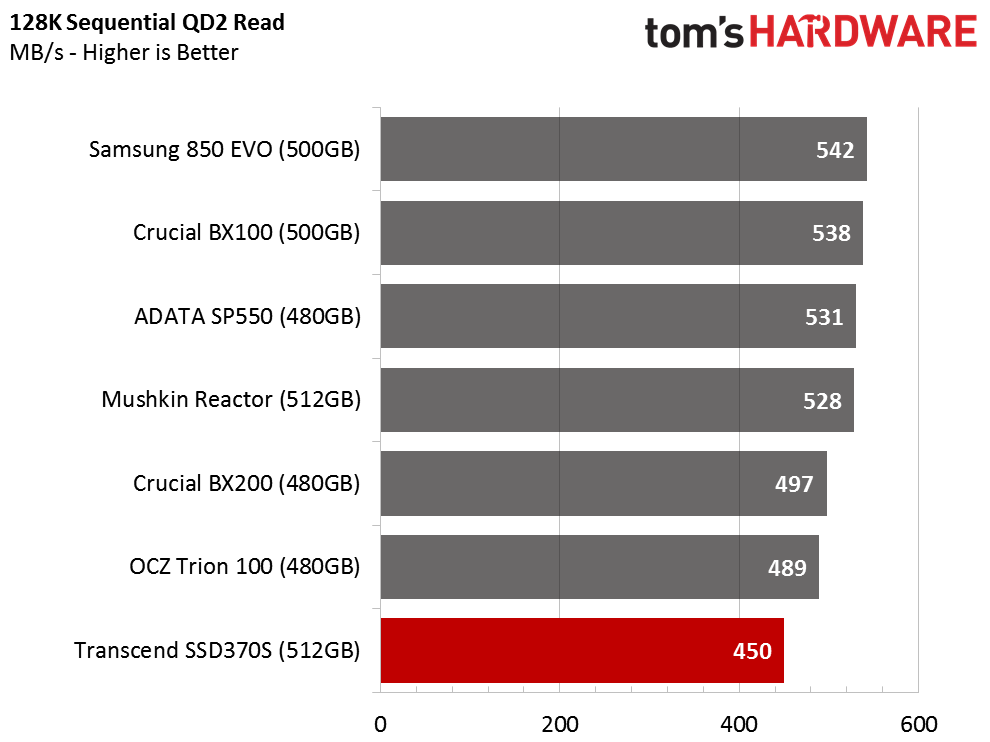
We're using entry-level and mid-range drives to compare against the SSD370S. This segment has seen a lot of activity lately with the addition of Crucial's BX200, Adata's SP550 and OCZ's Trion 100. All three SSDs join the Samsung 850 EVO as three-bit-per-cell-based contenders.
None of the drives in our chart have any problem reading back data sequentially. With deep command queues and large blocks, almost all of them hit the upper limits of SATA 6Gb/s. Transcend's SSD370S 512GB does appear at the bottom of the list in comparisons of two 128KB reads from the drives simultaneously.
Sequential Write
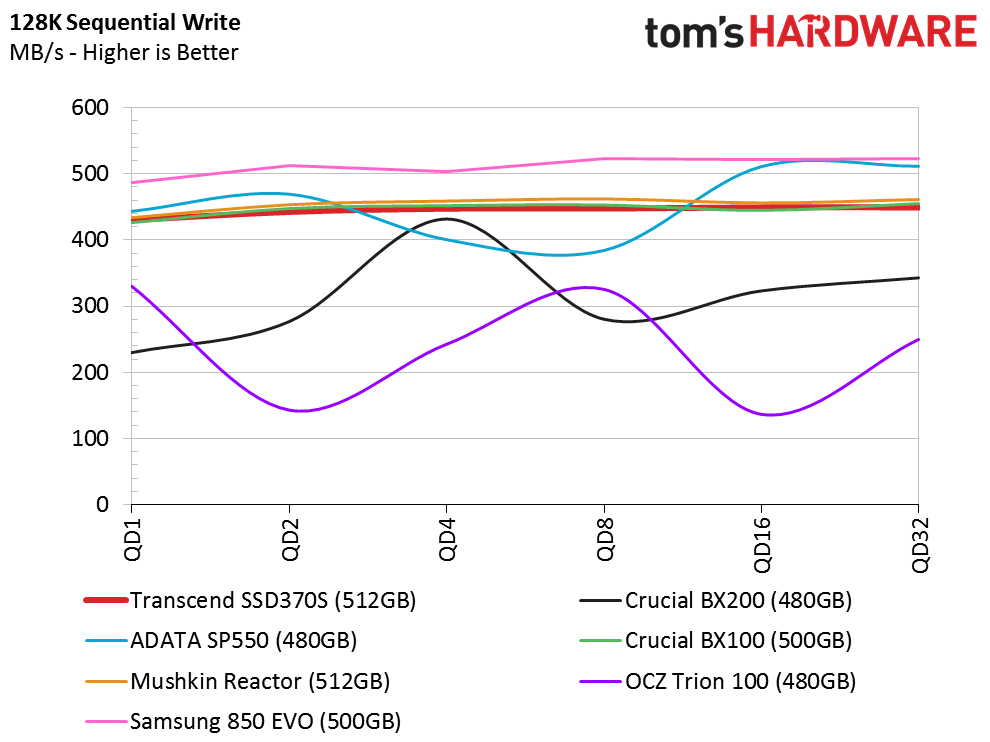
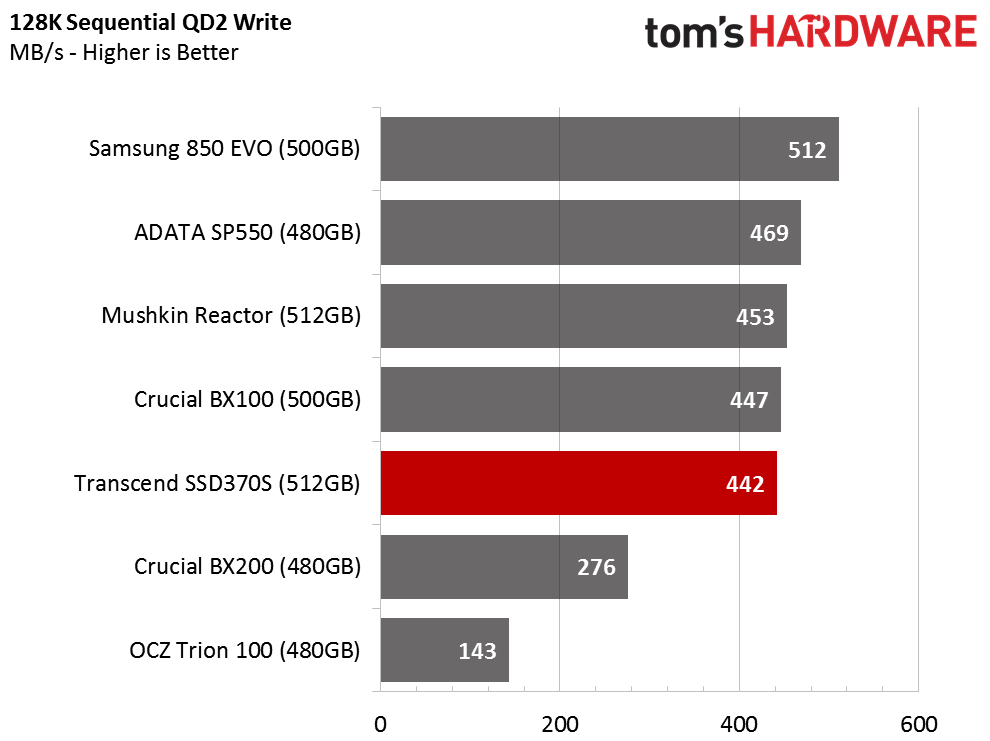
Sequential writes are more problematic, as three TLC-based drives struggle with inconsistent performance. They all rely heavily on small emulated SLC layers to mask the native behavior of TLC NAND. But those small caches only last for a few seconds before they're exhausted, exposing transfer rates averaging between 70 and 100 MB/s at this capacity point. Samsung's 850 EVO uses the same caching mechanism (branded TurboWrite), but its native TLC write performance is much higher.
The SSD370S falls in line with the other two SM2246EN-based drives. Its sequential write performance is consistent across the queue depth range.
Random Read
The SSD370S lands in the middle of the group in our 4KB random read test. At a queue depth of one, this drive ranks third on our list of low-cost SSDs, just behind the class-leading 850 EVO and recently-discontinued BX100.
Transcend's SSD also scales well through the queue depth range, peaking at just over 71,000 random read IOPS. Most enthusiasts don't exceed a queue depth of four though, even under heavy workloads.
Get Tom's Hardware's best news and in-depth reviews, straight to your inbox.
Random Write
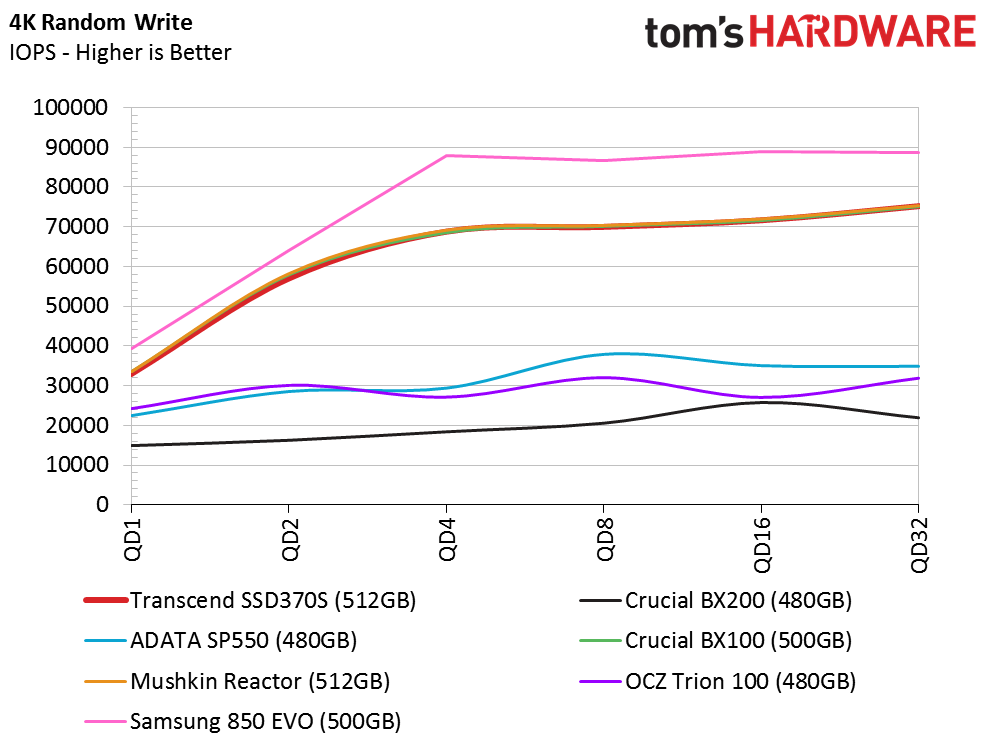
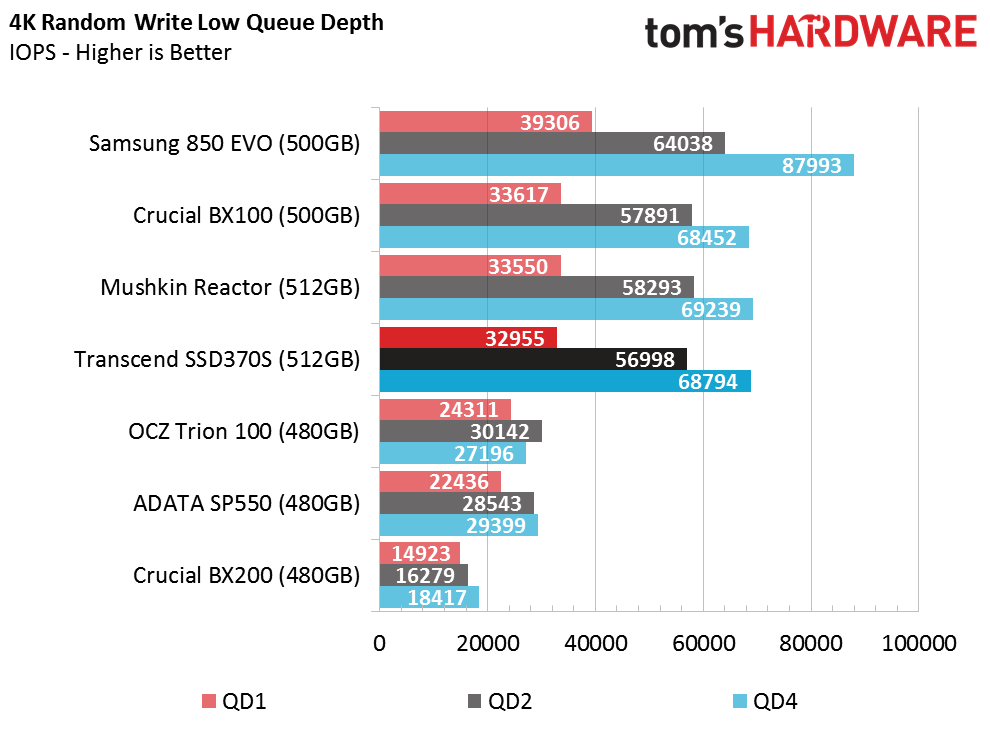
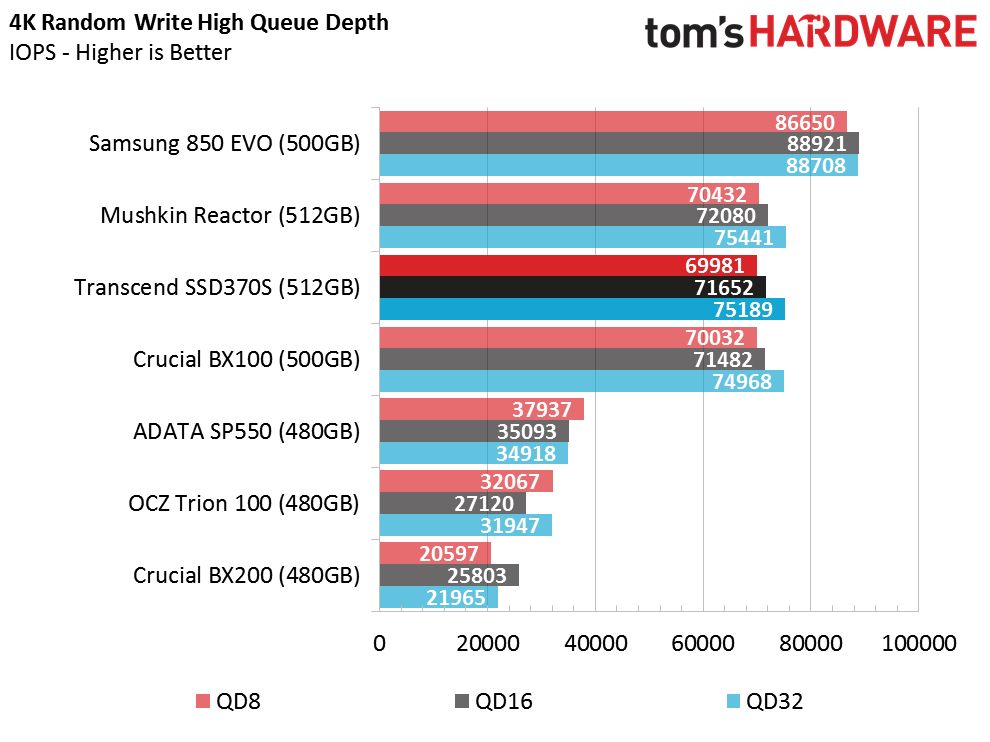
It's easier to encounter deep queues when you're working with random writes. From multi-tasking to installing software and performing other common tasks, it's certainly possible to feel the difference between these SSDs. Higher random write performance is also closely associated with lower latency between writes.
The three Silicon Motion-controlled drives again turn in nearly identical performance through the queue depth range. Their numbers far exceed the three TLC-based SSDs armed with Micron and Toshiba flash, but they all fail to match Samsung's 850 EVO.
Current page: Four-Corner Testing
Prev Page Specifications, Pricing, Warranty And Accessories Next Page Mixed Workload And Steady State
Chris Ramseyer was a senior contributing editor for Tom's Hardware. He tested and reviewed consumer storage.
